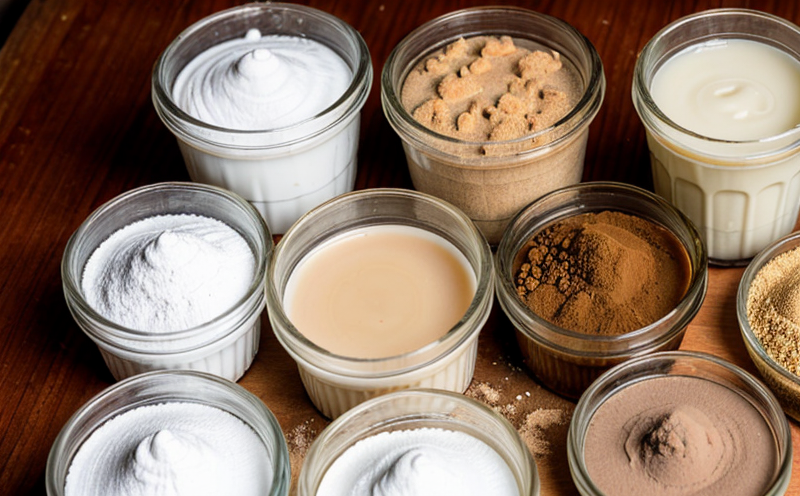USP Yeast and Mold Count in Dietary Supplements
The United States Pharmacopeia (USP) standard provides a stringent methodology for determining the yeast and mold count in dietary supplements. This test is essential to ensure product safety, compliance with regulatory standards, and protection of consumer health. Yeast and mold are common microorganisms that can contaminate dietary supplements during processing or storage. Their presence may lead to spoilage, allergic reactions, or other adverse effects if consumed.
Compliance with USP is critical for manufacturers in the food & feed testing sector, especially those operating within regulated markets such as pharmaceuticals and dietary supplement industries. This test helps ensure that supplements meet rigorous quality standards, which are vital for consumer confidence and regulatory compliance.
The methodology outlined by USP involves several steps to accurately determine the yeast and mold count in a given sample. These steps include:
- Sample Preparation: The dietary supplement is thoroughly mixed to ensure homogeneity, which is crucial for accurate sampling.
- Sampling: A defined amount of the mixture is taken as per USP guidelines. This sample is then inoculated onto a suitable growth medium designed specifically for yeast and mold.
- Growth Conditions: The inoculated plates are incubated under conditions that favor the growth of yeasts and molds, typically at 25°C ± 2°C for 7 days.
- Enumeration: After incubation, colonies are counted on each plate. This count provides an estimate of the viable yeast and mold population in the sample.
The enumeration process is critical as it directly impacts the accuracy of the test results. Proper techniques must be employed to avoid contamination or underestimation of colony counts.
Accurate counting requires aseptic technique, consistent growth conditions, and the use of appropriate media for yeast and mold differentiation. Once counted, the total number of colonies is reported in CFUs/g (colony-forming units per gram) as specified by USP .
The significance of this test extends beyond just regulatory compliance; it ensures that dietary supplements are safe for consumption. Yeast and mold contamination can lead to spoilage, which not only affects the shelf life but also poses health risks. By adhering to USP standards, manufacturers ensure product integrity and maintain consumer trust.
In addition to regulatory compliance, testing for yeast and mold count is crucial for maintaining product quality. Consistent monitoring of this parameter helps identify potential issues early in the production process, allowing for corrective actions to be taken promptly. This proactive approach not only enhances product safety but also reduces the risk of recalls and legal disputes.
The USP standard provides detailed guidelines on how to conduct this test accurately and efficiently. By following these protocols, laboratories can ensure reliable results that meet both internal quality control standards and external regulatory requirements.
Scope and Methodology
| Step | Action | Description |
|---|---|---|
| Sample Preparation | Mix the dietary supplement thoroughly. | This ensures homogeneity, which is crucial for accurate sampling. |
| Sampling | Take a defined amount of the mixture as per USP . | The sample is then inoculated onto a suitable growth medium designed specifically for yeast and mold. |
| Growth Conditions | Inoculated plates are incubated at 25°C ± 2°C for 7 days. | These conditions favor the growth of yeasts and molds, ensuring accurate enumeration. |
| Enumeration | Colonies on each plate are counted. | The total count provides an estimate of the viable yeast and mold population in the sample. |
The methodology outlined here is a summary of the detailed steps provided by USP . Proper execution ensures accurate results that comply with regulatory standards.
Why Choose This Test
- Regulatory Compliance: Ensuring adherence to international standards such as USP .
- Product Safety: Protecting consumers from potential health risks associated with yeast and mold contamination.
- Quality Assurance: Maintaining consistent product quality through regular testing and monitoring of key parameters.
- Consumer Trust: Building confidence in the brand by demonstrating a commitment to safety and integrity.
Compliance with USP is not only a legal requirement but also a testament to a company's dedication to excellence. By choosing this test, manufacturers can ensure their products meet the highest standards of quality and safety.
Competitive Advantage and Market Impact
- Enhanced Reputation: Demonstrating commitment to quality through rigorous testing enhances brand reputation.
- Increased Consumer Confidence: Meeting regulatory standards builds trust among consumers, leading to increased sales and market share.
- Competitive Edge: Adherence to stringent international standards sets a company apart from competitors in the industry.
- Legal Protection: Compliance with USP provides legal protection against potential lawsuits related to product safety issues.
The impact of this test extends beyond individual products; it contributes to the overall reputation and credibility of the industry. By setting a high standard for yeast and mold testing, companies can influence market trends and set benchmarks for others to follow.





